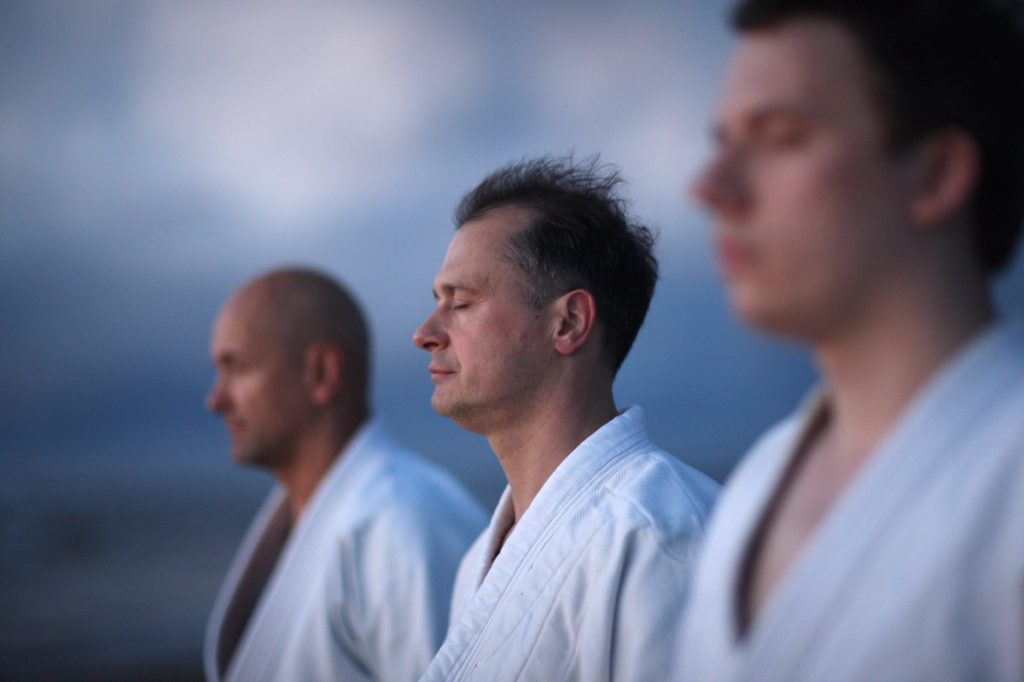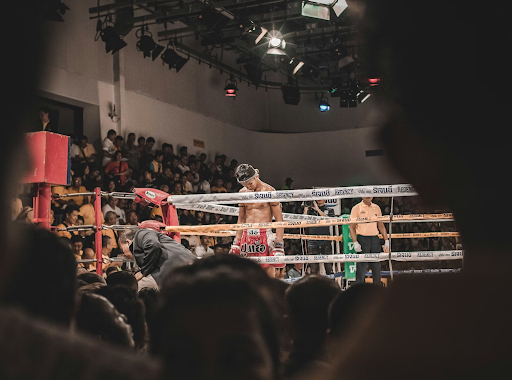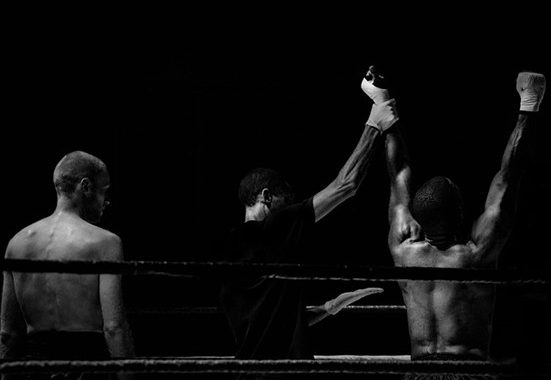
Types Of Martial Arts: The Styles That Teach Self-Defense
Martial arts bring together centuries-old traditions and modern disciplines that captivate millions worldwide. From striking styles to grappling techniques, these practices offer unique ways to build strength, confidence, and self-defense skills. However, not all martial arts are the same, and finding the right one depends on your goals and interests.
This guide breaks down the types of martial arts, focusing on their techniques, benefits, and what sets each apart.
Popular Martial Art Types
Martial arts vary in history, techniques, and purpose, focusing on striking, grappling, self-defense, or a mix of both. Understanding these styles helps you choose the one that best fits your goals, whether for fitness, competition, or practical skills. Let’s explore the most popular styles and their unique qualities!
Grappling or Ground-Fighting Martial Arts
Grappling or ground-fighting martial arts focus on controlling and submitting opponents through techniques such as joint locks, throws, and pins. These styles are particularly effective in real-life self-defense situations, as they allow practitioners to defend themselves without relying on strikes. Let’s take a look at some of the most popular grappling styles.
Brazilian Jiu-Jitsu
Brazilian Jiu-Jitsu (BJJ) is one of the most popular grappling martial arts in the world, attracting millions of practitioners globally. BJJ emphasizes ground fighting and submission techniques, making it incredibly effective for self-defense, especially in situations where you’re overpowered or taken to the ground.
It’s widely practiced by athletes, law enforcement, and civilians due to its practicality and the ability to neutralize larger opponents using leverage and technique.
- Striking Ability: Minimal focus on striking; the emphasis is on submissions, chokes, and joint locks.
- Grappling Skills: Exceptional grappling and ground control. Focuses on submissions and positional control.
- Adaptability: Excellent adaptability in close-quarters, especially when taken to the ground.
- Overall Effectiveness: Highly effective for self-defense, particularly against larger or stronger opponents.
Judo
Judo is a traditional Japanese martial art that focuses on throws, takedowns, and ground control techniques. Judo’s emphasis on using an opponent’s energy and balance against them makes it effective for all skill levels, from beginners to advanced practitioners. It’s especially popular among law enforcement and military personnel due to its ability to quickly subdue opponents without relying on strikes.
- Striking Ability: None; Judo is purely grappling-based with a focus on throws and pins.
- Grappling Skills: Strong focus on throws and takedowns, often using an opponent’s momentum to execute techniques.
- Adaptability: Effective in both standing and ground situations, but more reliant on throws to neutralize an opponent quickly.
- Overall Effectiveness: Great for self-defense, especially in situations where you need to neutralize an opponent fast without harming them.
Wrestling
Wrestling is one of the oldest and most widely practiced martial arts, with various forms ranging from Olympic wrestling to folkstyle and freestyle. It focuses on takedowns, control, and pinning techniques. Wrestling is integral to many combat sports, and its practitioners often dominate in mixed martial arts (MMA) due to their ability to control opponents on the ground.
- Striking Ability: None; wrestling is focused solely on grappling and ground control.
- Grappling Skills: Emphasizes takedowns, control, and pinning an opponent to the mat.
- Adaptability: Excellent at controlling opponents and dictating the pace of a fight, particularly in grappling exchanges.
- Overall Effectiveness: Highly effective in preventing an opponent from striking and dominating them on the ground.
Sambo
Sambo is a Russian martial art that combines elements of judo and wrestling, focusing on both throws and submissions. Widely practiced by military forces and combat sports enthusiasts, Sambo has gained recognition for its efficiency in self-defense and combat sports, particularly mixed martial arts.
- Striking Ability: Minimal striking, though some Sambo styles include basic striking techniques.
- Grappling Skills: A hybrid mix of judo-style throws and Brazilian Jiu-Jitsu-style submissions.
- Adaptability: Highly versatile, incorporating both standing and ground techniques for a dynamic approach to combat.
- Overall Effectiveness: Known for its practical, real-world applications, especially in both self-defense and competitive fighting.
Striking or Stand-up Martial Arts
Striking or stand-up martial arts focus on techniques that involve punches, kicks, elbows, and knees to attack opponents. These styles emphasize maintaining distance and delivering powerful strikes while avoiding being taken to the ground. Let’s explore the most notable striking martial arts.
Karate
Karate is a traditional Japanese martial art that emphasizes powerful, precise strikes using the hands, feet, elbows, and knees. Known for its disciplined movements and forms (kata), karate practitioners develop strong mental focus and physical conditioning. Karate’s wide range of techniques makes it adaptable for defending against various types of attacks, from close combat to longer-range strikes.
- Striking Ability: Focuses on punches, kicks, elbow strikes, and knee strikes, often with an emphasis on speed and precision.
- Grappling Skills: Minimal focus on grappling; mainly used for striking.
- Adaptability: Effective at maintaining distance and delivering fast, powerful strikes.
- Overall Effectiveness: Highly effective for self-defense and competitive sparring, particularly in striking exchanges.
Muay Thai
Muay Thai, known as the “Art of Eight Limbs,” is a striking martial art from Thailand that utilizes punches, kicks, elbows, and knees. It’s recognized for its emphasis on using all parts of the body for both offense and defense. Muay Thai practitioners develop exceptional endurance, strength, and clinch techniques, making it highly effective in close-range combat. It’s widely regarded as one of the most brutal yet effective striking styles in combat sports.
- Striking Ability: Utilizes punches, kicks, elbows, knees, and clinch strikes, offering a diverse arsenal for both offense and defense.
- Grappling Skills: Some clinch and sweeps, but primarily a striking art.
- Adaptability: Extremely effective in both close and long-range combat, especially in the clinch.
- Overall Effectiveness: Highly effective for self-defense and in MMA due to its versatility and powerful striking techniques.
Taekwondo
Taekwondo is a Korean martial art that emphasizes high, fast kicks and agile footwork. Known for its acrobatic and visually stunning techniques, it focuses on speed, precision, and flexibility. Practitioners often engage in sparring and competition, developing quick reflexes and agility. Taekwondo’s focus on kicks, combined with its deep traditional roots, makes it a popular martial art worldwide.
- Striking Ability: Focuses primarily on high, fast kicks, with some emphasis on hand strikes.
- Grappling Skills: Minimal focus on grappling; primarily a striking martial art.
- Adaptability: Effective at long-range striking, especially when maintaining distance from an opponent.
- Overall Effectiveness: Effective for self-defense and competition, particularly in situations where high mobility and quick strikes are key.
Kickboxing
Kickboxing blends elements of traditional martial arts and Western boxing, focusing on both punches and kicks. This dynamic striking art teaches powerful, well-timed strikes, and the ability to move fluidly between offense and defense. Kickboxing is popular in both fitness and competitive circles, known for its ability to improve cardiovascular health and coordination while also providing practical self-defense skills.
- Striking Ability: A mix of punches, kicks, and knee strikes, offering a well-rounded approach to stand-up fighting.
- Grappling Skills: Minimal emphasis on grappling, though some styles may include clinch work.
- Adaptability: Effective in both close-range and long-range striking exchanges.
- Overall Effectiveness: Highly effective for self-defense and fitness, as well as in combat sports like MMA and kickboxing competitions.
Boxing
Boxing is one of the most recognized and practiced striking martial arts, focusing on punches, footwork, and defensive movements. It teaches precision, timing, and the ability to deliver powerful punches while avoiding incoming attacks. Boxing’s emphasis on head and body movement makes it effective in avoiding damage while staying on the offensive.
- Striking Ability: Primarily focused on punches, including jabs, crosses, hooks, and uppercuts.
- Grappling Skills: Minimal focus on grappling; the focus is solely on striking.
- Adaptability: Extremely effective in both offensive and defensive striking, especially in close-quarters combat.
- Overall Effectiveness: Highly effective for self-defense and competition, particularly in striking-focused encounters.
Low-Impact or Meditative Styles
Low-impact or meditative martial arts emphasize internal energy, slow movements, and fluid techniques. These styles focus on balance, coordination, and mental discipline, often encouraging practitioners to cultivate a calm, focused mind. These arts are popular among those seeking a peaceful practice that still offers practical skills for self-defense and personal growth. Let’s take a closer look at some notable low-impact martial arts.
Tai Chi
Tai Chi is an ancient Chinese martial art known for its slow, graceful movements and emphasis on relaxation and breathing. Often referred to as “moving meditation,” Tai Chi focuses on cultivating internal energy (qi) and promoting balance and harmony within the body. Tai Chi’s low-impact movements make it accessible for people of all ages and fitness levels.
- Striking Ability: Minimal striking; focuses on redirection of force rather than direct attacks.
- Grappling Skills: Some focus on joint locks and throws, typically performed in a slow, controlled manner.
- Adaptability: Highly effective in self-defense through leveraging an opponent’s energy and maintaining balance.
- Overall Effectiveness: Highly effective for self-defense and health, particularly for those seeking stress relief and improved body awareness.
Aikido
Aikido is a Japanese martial art that focuses on blending with an opponent’s movements and redirecting their energy to neutralize attacks. Rather than relying on brute strength, Aikido uses fluid, circular motions to control and throw opponents. Aikido is practiced worldwide and is particularly popular among those seeking a peaceful, non-violent approach to martial arts.
- Striking Ability: Minimal focus on strikes; primarily uses joint locks and throws.
- Grappling Skills: Focused on joint manipulation, locks, and throws, often used in combination with redirection.
- Adaptability: Excellent adaptability in defending against various attacks by redirecting force and controlling opponents.
- Overall Effectiveness: Effective for self-defense, particularly in situations where controlling an opponent without harm is desired.
Wing Chun
Wing Chun is a Chinese martial art known for its close-range combat techniques and rapid, direct strikes. It emphasizes efficiency, using quick, straight punches, and low kicks to overwhelm opponents. Wing Chun practitioners focus on intercepting attacks and countering them immediately, using minimal force.
- Striking Ability: Focuses on fast, direct punches, and low kicks. Minimal emphasis on high, wide strikes.
- Grappling Skills: Some focus on trapping and joint locks, though it primarily revolves around striking.
- Adaptability: Highly effective in close-quarters combat, especially in quick exchanges.
- Overall Effectiveness: Highly effective for self-defense, particularly when facing multiple or faster attackers.
Weapon Use Martial Arts Styles
Weapon-based martial arts focus on the use of various tools, like swords, sticks, and knives, for both offense and defense. These styles emphasize precision, timing, and coordination in handling weapons. Practitioners develop advanced skills in both armed and unarmed combat. Here are some prominent weapon-based styles.
Kendo
Kendo is a Japanese martial art that uses bamboo swords (shinai) and armor (bogu). It focuses on striking, blocking, and footwork, with an emphasis on discipline, respect, and mental clarity.
- Striking Ability: Focuses on precise strikes to the head, body, and wrists.
- Grappling Skills: Limited; primarily a striking art.
- Adaptability: Effective in situations requiring quick, controlled strikes.
- Overall Effectiveness: Great for discipline and self-defense in armed combat situations.
Eskrima/Arnis/Kali
These Filipino martial arts specialize in the use of sticks, knives, and other bladed weapons. The arts emphasize fluid movement, adaptability, and quick strikes, making them highly effective in both armed and unarmed self-defense.
- Striking Ability: Focus on fast, powerful strikes with sticks or knives.
- Grappling Skills: Includes joint locks and disarms.
- Adaptability: Highly adaptable in dynamic combat scenarios.
- Overall Effectiveness: Excellent for real-world self-defense and close-quarters combat.
Silat
Silat is a Southeast Asian martial art known for its focus on striking, joint manipulation, and weaponry. It incorporates fluid, unpredictable movements and is often practiced with knives, sticks, and other weapons.
- Striking Ability: Focuses on fast strikes, joint manipulation, and pressure points.
- Grappling Skills: Includes throws, locks, and ground control.
- Adaptability: Effective in varied combat scenarios, including armed confrontations.
- Overall Effectiveness: Highly effective for both armed and unarmed self-defense.
Hybrid Fighting Styles
Hybrid fighting styles combine elements from various martial arts to create a versatile, adaptable approach to combat. These styles focus on practical techniques from different disciplines, making them effective for both self-defense and competition. Let’s take a look at two popular hybrid styles.
MMA (Mixed Martial Arts)
MMA blends techniques from boxing, Brazilian Jiu-Jitsu, wrestling, Muay Thai, and more. It is a full-contact sport that allows both striking and grappling, making it one of the most versatile martial arts for self-defense and competition.
- Striking Ability: Combines boxing, Muay Thai, and kickboxing for powerful strikes.
- Grappling Skills: Incorporates Brazilian Jiu-Jitsu and wrestling for takedowns and submissions.
- Adaptability: Highly adaptable in both stand-up and ground combat.
- Overall Effectiveness: Highly effective for real-world self-defense and professional competition.
Jeet Kune Do
Jeet Kune Do, developed by Bruce Lee, blends elements of Wing Chun, boxing, fencing, and other martial arts. It emphasizes simplicity, directness, and practicality in combat.
- Striking Ability: Focuses on fast, direct strikes with minimal movement.
- Grappling Skills: Limited, with an emphasis on intercepting and countering attacks.
- Adaptability: Extremely adaptable, focusing on what works in the moment.
- Overall Effectiveness: Highly effective for both self-defense and street fighting situations.
Wrap-Up!
Each martial art offers unique benefits, from grappling and striking to meditative practices and weapon skills. Whether you’re looking to improve your fitness, learn self-defense, or engage in competition, there’s a style that suits your goals and preferences.
By understanding the strengths and techniques of each martial art, you can choose the one that aligns with your needs. Explore, train, and discover the discipline that empowers you—because the right martial art can transform not only your physical abilities but also your mental focus and confidence.


























